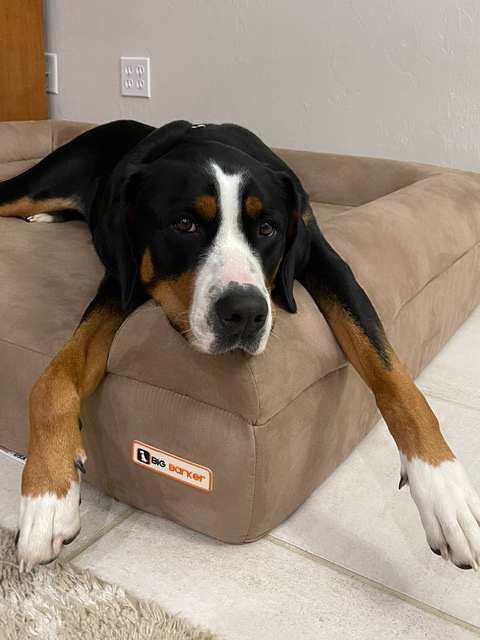What is Hip Dysplasia?
Dr. Rachel Mar (@thevitalityvet) is a passionate, integrative medicine and Fear Free certified Veterinarian! She is enthusiastic about helping large dog parents manage joint pain, prevent joint issues and help their dogs live their best possible lives!

Dr. Rachel was able to answer several questions about Hip Dysplasia and we are so excited to share them!

1. What Is Hip Dysplasia In Dogs? What Causes It?
Hip Dysplasia is the abnormal development of the coxofemoral joint (aka hip). This joint is what we call a ‘ball-and-socket’ joint. So, the ‘ball' is the head of the femur and the ’socket’ is the acetabulum. With hip dysplasia, these are growing at different rates and thus joint laxity/looseness occurs. This progresses into degenerative joint disease (osteoarthritis). Hip Dysplasia occurs in young dogs as it is a developmental disorder. It may not be diagnosed or noticed until the dog is an adult or older as dogs can be very stoic or only display intermittent signs of lameness. If this is the case, there is likely already severe arthritis developing in the dog’s joints once the hip dysplasia is diagnosed.
Its cause is not entirely known but we assume it is mainly genetic / an inherited condition. It is more commonly seen in large and giant breeds such as Labrador Retrievers, Golden Retrievers, German Shepherds, Newfoundlands and Rottweilers.

2. Signs your dog has hip dysplasia (common symptoms how to identify them)
The classic sign for dogs with hip dysplasia is what we call the “bunny-hopping” gait. This is when a dog will lift both hind legs at once and end up looking as if they are hopping like a rabbit. This occurs because the patient’s hips are luxating outside the hip socket. This condition can be extremely painful so nearly all patients present with some form of lameness - whether it is limping on one hind leg or both. Dogs with hip dysplasia may also have difficulty rising up, seem wobbly and exhibit exercise intolerance. In general, if your dog is limping or showing signs of lameness (even if it is intermittent), it is definitely worth getting an appointment with your vet so an exam can be performed and radiographs can be taken to rule out the presence of hip dysplasia.

3. Are there any potential treatments/surgery for dogs with hip dysplasia?
Yes, especially if diagnosed early! Hip dysplasia can be surgically corrected with various different procedures. The two most common surgical techniques for hip dysplasia are a total hip replacement and femoral head ostectomy (FHO). Other surgical procedures used to treat hip dysplasia include triple pelvic osteotomy (TPO) and juvenile pubic symphysiodesis. The type of surgery performed is based on the dog’s age and lifestyle, as well as the severity of disease.

4. Potential medications/supplements? Home treatments? Ways to make your dog more comfortable at home?
There are many reasons an owner may not choose to have their dog undergo surgery to correct the hip dysplasia, or reasons the vet may not recommend immediate surgical correction. In this case, hip dysplasia can be managed with medication such as NSAIDs and exercise restriction to minimize further impact on the hip joint. There are also some integrative approaches which can be performed to help patients with hip dysplasia, whether this is done with or without surgical correction. This includes physical rehabilitation therapy, acupuncture and laser treatment. Physical rehabilitation has proven to be essential in a dog’s recovery after a surgical correction of hip dysplasia, speeding up recovery times and increasing muscle strength.
At home, parents can ensure surfaces are easier for their pet to walk on (ie. non slippery using mats/rugs) as well as limited stair use. Parents can provide ramps for their dogs or lift them into the car.

5. Can you prevent hip dysplasia in dogs? How?
Since hip dysplasia has a genetic component, dogs with this condition should not be bred. Environmental factors which have been correlated to Hip Dysplasia include early castration/neutering and obesity. Thus, speaking with your vet about the appropriate time to neuter or spay your dog will help as well as keeping your dogs at an ideal weight!